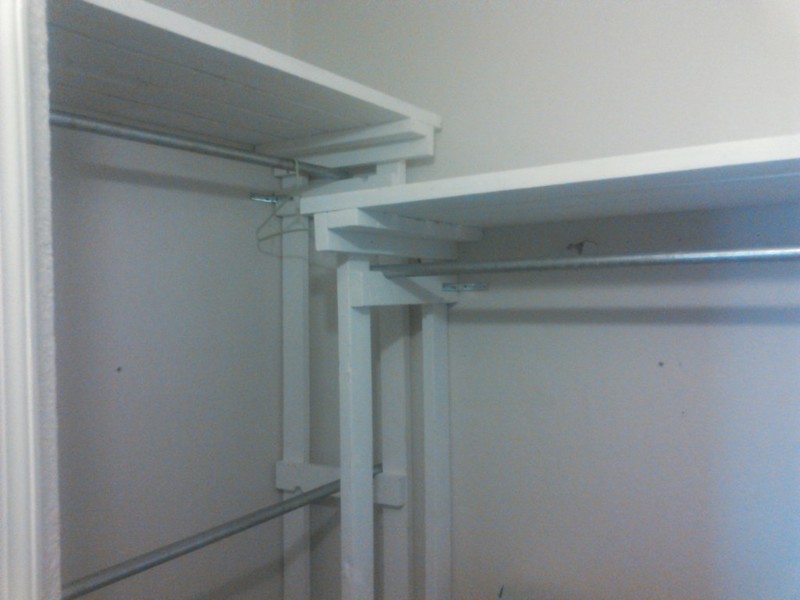Simply put.. I'd move the load to the floor...
My better half is a school teacher and has a GIANT closet. Teachers have wardrobes like royalty and Kardashians.
Except its bought on E-bay and in thrift stores. Her closet is is only 18 sqrft smaller than the bedroom I grew up in.
The racks were attached to walls. New "Manufactured home

" in 2002 double wide
Its a F'n Trailer, I don't care what she says, ehhhh yeah I do.
Her Dad fixed them years ago.. Then I fixed them, then they all came a tumbling down again and I went
nuts. 6 million screws and brackets and what not... And then once again, One wall came down and
all the other walls came crashing down AGAIN!!!!! Some of the screws ripped out of the wall, some
of the brackets BROKE.
So no more of this wall stuff. Last week I re-did her closet. All the forces now go TO THE FLOOR!!! Pics below.
Just framing timbers and 1" pipe.. But its not going to fall, I had my fat ass up there jumping up and down, its
not going anywhere.
My suggestion, do something to get the forces into the floor, OR coming down from the ceiling if you've got something
solid up there.. It doesn't have to look like crap, like my closet.. Black hammer tone paint on crappy mild steel
can sort of look like cast iron. Do something fun.. Picture frames or get some neat designs plasma cut. Some cool
scroll stuff.. Your imagination is the limit.. Floating shelves, whatever, you can have a lot more fun with it, and
make sure it doesn't take your wall down at the same time.



 " in 2002 double wide
" in 2002 double wide

